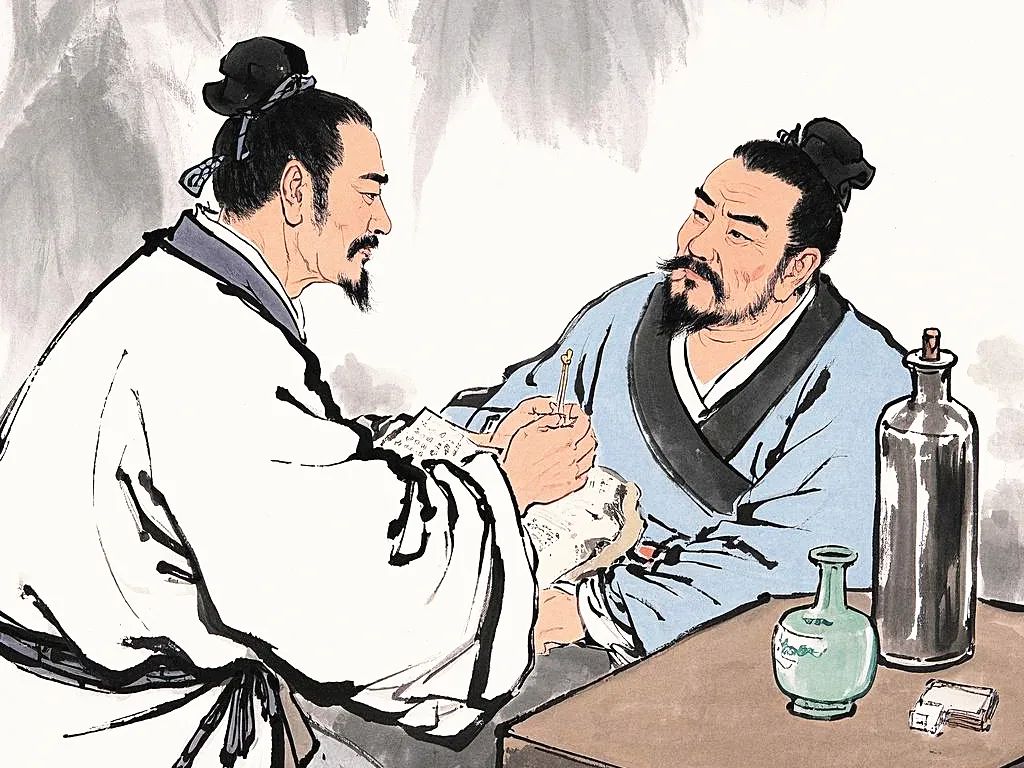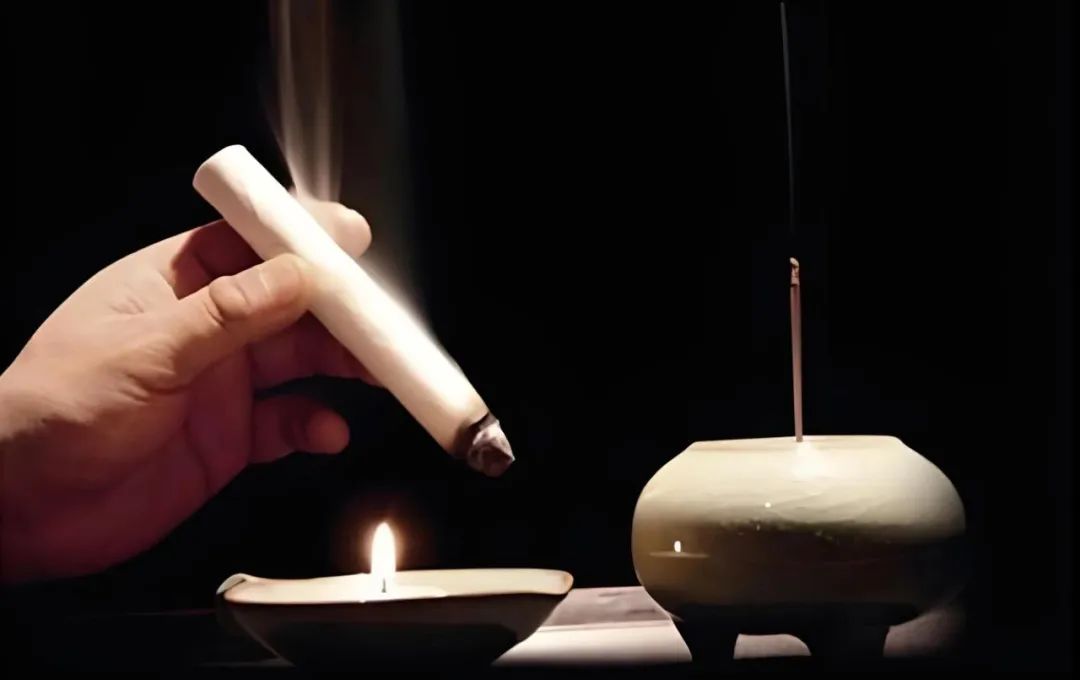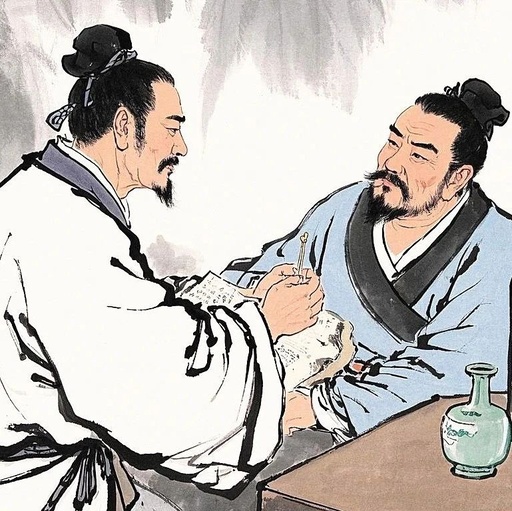In the history of moxibustion development in Traditional Chinese Medicine (TCM), Chen Yanzhi from the Southern and Northern Dynasties is an undeniable innovator. He advocated for a moxibustion approach that emphasizes fewer acupuncture points but greater intensity, breaking the shackles of traditional complex point selection, allowing moxibustion to transition from a specialized practice of physicians to widespread public use. Streamlining ComplexityDuring the Southern and Northern Dynasties, frequent wars led to a scarcity of medical resources. Chen Yanzhi keenly observed that traditional acupuncture relied on professional physicians and complex acupuncture point maps, making it difficult to benefit the general populace. In his work Small Formulas, he proposed:“Acupuncture requires a master, but moxibustion can be performed by anyone.” He believed that moxibustion should be simplified. His principle of “streamlining complexity” is mainly reflected in the following two aspects.1. Fewer Acupuncture Points He advocated for moxibustion at the site of the disease, selecting only 1-3 acupuncture points close to the lesion each time;2. Greater Intensity Depending on the condition’s cold-heat and deficiency-excess patterns, the intensity of moxibustion can range from dozens to hundreds of applications, with cold conditions or severe cases requiring up to a hundred applications to overcome pathogenic factors.
Streamlining ComplexityDuring the Southern and Northern Dynasties, frequent wars led to a scarcity of medical resources. Chen Yanzhi keenly observed that traditional acupuncture relied on professional physicians and complex acupuncture point maps, making it difficult to benefit the general populace. In his work Small Formulas, he proposed:“Acupuncture requires a master, but moxibustion can be performed by anyone.” He believed that moxibustion should be simplified. His principle of “streamlining complexity” is mainly reflected in the following two aspects.1. Fewer Acupuncture Points He advocated for moxibustion at the site of the disease, selecting only 1-3 acupuncture points close to the lesion each time;2. Greater Intensity Depending on the condition’s cold-heat and deficiency-excess patterns, the intensity of moxibustion can range from dozens to hundreds of applications, with cold conditions or severe cases requiring up to a hundred applications to overcome pathogenic factors. His ideas significantly lowered the operational threshold, allowing illiterate villagers to perform moxibustion according to their ailments, becoming a key factor in promoting the popularization of moxibustion.Technical Innovations Chen Yanzhi not only simplified the process but also innovated technically:1. Suppurative Moxibustion for Evacuating Pathogens He proposed that “when moxibustion causes suppuration, wind and cold are expelled,” believing that the suppuration of sores indicates the expulsion of pathogens; without suppuration, the root of the disease is hard to eliminate.2. Differential Moxibustion Dosage For limb points, 7-14 applications; for chest, abdomen, and back points, up to a hundred applications; reduce dosage for heat conditions (e.g., 30 applications for moxibustion at Guanyuan for diabetes), and increase dosage for cold conditions (e.g., 100 applications for moxibustion at Shimen for diarrhea).3. Regional Adaptation For the humid and hot climate in the south, he suggested reducing the size of the moxa stick to 1.5 fen to avoid excessive damage to body fluids.
His ideas significantly lowered the operational threshold, allowing illiterate villagers to perform moxibustion according to their ailments, becoming a key factor in promoting the popularization of moxibustion.Technical Innovations Chen Yanzhi not only simplified the process but also innovated technically:1. Suppurative Moxibustion for Evacuating Pathogens He proposed that “when moxibustion causes suppuration, wind and cold are expelled,” believing that the suppuration of sores indicates the expulsion of pathogens; without suppuration, the root of the disease is hard to eliminate.2. Differential Moxibustion Dosage For limb points, 7-14 applications; for chest, abdomen, and back points, up to a hundred applications; reduce dosage for heat conditions (e.g., 30 applications for moxibustion at Guanyuan for diabetes), and increase dosage for cold conditions (e.g., 100 applications for moxibustion at Shimen for diarrhea).3. Regional Adaptation For the humid and hot climate in the south, he suggested reducing the size of the moxa stick to 1.5 fen to avoid excessive damage to body fluids. Although his original work Small Formulas has been lost, his ideas have been passed down through texts such as Qianjin Fang and Wai Tai Mi Yao. Tang Dynasty physician Sun Simiao inherited his principle of greater intensity moxibustion, promoting moxibustion at Zusanli as a classic for health preservation; Song Dynasty physician Dou Cai further proposed moxibustion for severe diseases with a hundred applications, forming the warming and tonifying school of moxibustion. Modern research also confirms its scientific basis: clinical findings show that adequate moxibustion can significantly enhance immune function, and the strategy of greater intensity at key points is particularly effective in the management of chronic diseases.
Although his original work Small Formulas has been lost, his ideas have been passed down through texts such as Qianjin Fang and Wai Tai Mi Yao. Tang Dynasty physician Sun Simiao inherited his principle of greater intensity moxibustion, promoting moxibustion at Zusanli as a classic for health preservation; Song Dynasty physician Dou Cai further proposed moxibustion for severe diseases with a hundred applications, forming the warming and tonifying school of moxibustion. Modern research also confirms its scientific basis: clinical findings show that adequate moxibustion can significantly enhance immune function, and the strategy of greater intensity at key points is particularly effective in the management of chronic diseases.

